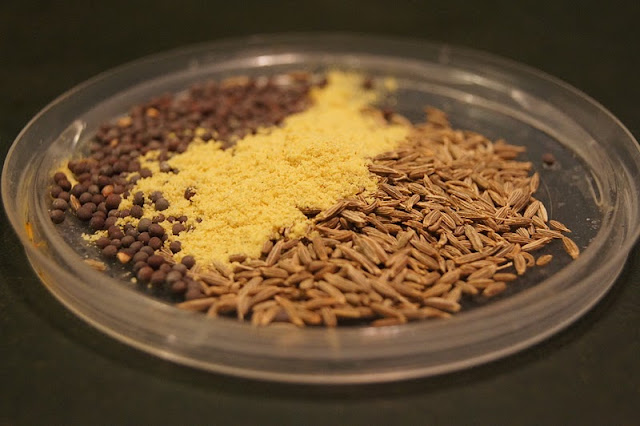This is a delightfully rough-and-ready stir fry with a prominent black bean flavour suggested in Fuchsia Dunlop's Hunanese cookbook. It's best to use pork on the bone in some form - I used some pork chops and they worked admirably.
Simmer the pork for a few minutes in some water (the first stage of cooking - it being 'returned to the pot' when stir fried). Remove and slice. This is the traditional Chinese method of removing impurities from the meat and partly cooking it before stir frying. I'm still on the fence with it to be honest but open to suggestions.
Peel the garlic cloves and slice the ginger thinly. Fry them both on a medium heat in some oil for a few minutes. Add the meat and cook until it has some colour.
Add the black beans, fresh chillies, greens and a few slugs of soy sauce and a little sesame oil. I used some super pokey home-grown rocket here which worked well. I also added some celery and pepper to turn it into a complete meal. Use anything you have to hand - FD presents the recipe as something a Hunanese mate of hers cooked for her and I guess it's a home-style dish unbound by the dogma of restaurant process or official recipe. Cook everything for another couple of minutes and it's done.
Very pleasing. It's not a very moist dish so it might be nice in future to have alongside some steamed aubergine or similar.
Best also to avoid parsimony with the beans here. I am sometimes over cautious in my allotting as they looks so potent but use a generous hand. The overall vibe is robust and farm-housey: whole cloves of garlic, big slices of ginger and the salty black beans.
- pork on the bone for two or three
- a small handful of back beans, a thumb of ginger and a head of garlic
- a couple of handfuls of some type of greens and/or spring onions
- soy sauce, sesame oil
- a couple of fresh chillies
Simmer the pork for a few minutes in some water (the first stage of cooking - it being 'returned to the pot' when stir fried). Remove and slice. This is the traditional Chinese method of removing impurities from the meat and partly cooking it before stir frying. I'm still on the fence with it to be honest but open to suggestions.
Peel the garlic cloves and slice the ginger thinly. Fry them both on a medium heat in some oil for a few minutes. Add the meat and cook until it has some colour.
Add the black beans, fresh chillies, greens and a few slugs of soy sauce and a little sesame oil. I used some super pokey home-grown rocket here which worked well. I also added some celery and pepper to turn it into a complete meal. Use anything you have to hand - FD presents the recipe as something a Hunanese mate of hers cooked for her and I guess it's a home-style dish unbound by the dogma of restaurant process or official recipe. Cook everything for another couple of minutes and it's done.
Very pleasing. It's not a very moist dish so it might be nice in future to have alongside some steamed aubergine or similar.




























